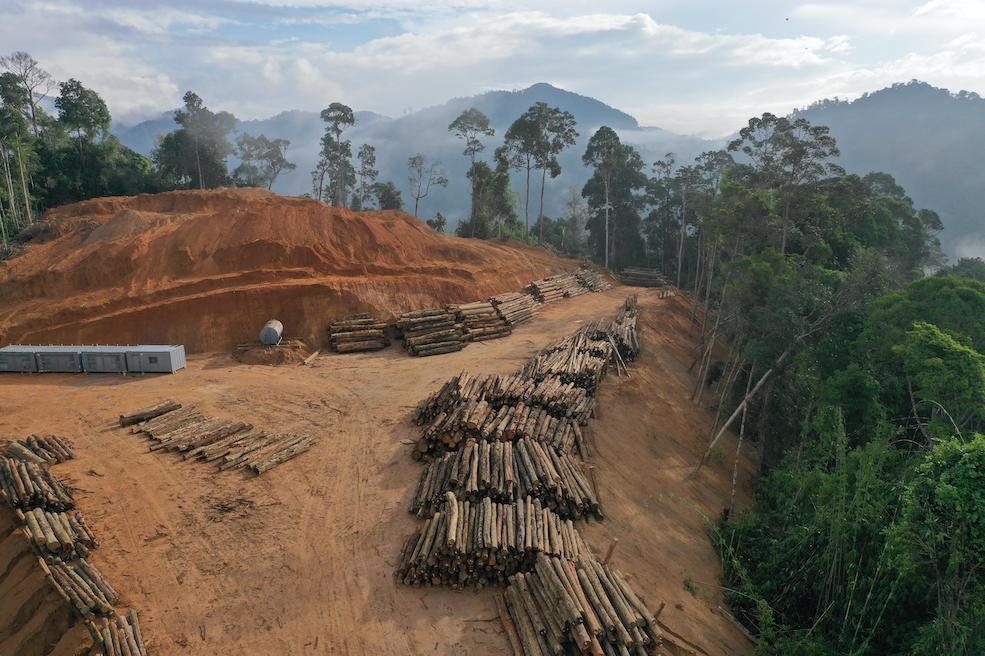Restoring ecosystems on just 15 percent of the world’s current farmland could spare 60 percent of the species expected to go extinct while simultaneously sequestering 299 gigatonnes of CO2 — nearly a third of the total atmospheric carbon increase since the Industrial Revolution, a new study has found.
If the land area spared from farming could be doubled — allowing 30 percent of the world’s most precious lost ecosystems to be fully restored — more than 70 percent of expected extinctions could be avoided and fully half the carbon released since the Industrial Revolution (totalling 465 gigatonnes of CO2) absorbed by the rewilded natural landscape, researchers find.
The study, entitled “Global priority areas for ecosystem restoration,” was published in Nature this week. The lead author is Bernardo Strassburg from the Rio Conservation and Sustainability Science Centre at the Pontifical Catholic University in Rio de Janeiro, Brazil. Some 27 researchers from 12 countries contributed to the report, which assesses forests, grasslands, shrublands, wetlands and arid ecosystems.
“Pushing forward on plans to return significant sweeps of nature to a natural state is critical to preventing ongoing biodiversity and climate crises from spinning out of control,” lead author Bernardo Strassburg said. “We show that if we’re smarter about where we restore nature, we can tick the climate, biodiversity and budget boxes on the world’s urgent to-do list.”
As Strassburg suggests, the paper shows that where nature is restored makes a big difference both to climate and wildlife. Using a sophisticated multi-criteria optimization platform called PLANGEA and the latest mapping technologies, the researchers assessed 2,870 million hectares of ecosystems worldwide that have been converted to farmland. Of these, 54 percent were originally forests, 25 percent grasslands, 14 percent shrublands, 4 percent arid lands and 2 percent wetlands.
They then evaluated these lands based on three factors, or objectives — animal habitats, carbon storage and cost-effectiveness — to determine which areas would deliver the most benefits for biodiversity and carbon at the lowest cost when restored. They focused on land converted to agriculture between 1992 and 2015.
Those priority areas offering the greatest “bang for the buck,” in terms of combined carbon, biodiversity and cost-effectiveness, are largely in tropical regions and developing countries, especially Central and South America, West and Central Africa, the Indian sub-continent and South-East Asia, the mapping tool found.
These regions stand out because they house the planet’s most important biodiversity hotspots and include highly diverse tropical and sub-tropical forests that have recently experienced major habitat loss. An immediate priority would be restoring newly deforested areas that are still surrounded by intact forests.

However, a determined effort to promote higher-yield farming is needed in order to realize these profound benefits to biodiversity and climate mitigation without impacting food supplies. A sustainable intensification strategy for farming, combined with efforts to reduce food waste and reduce animal protein consumption, could support the restoration of some 1.5 billion hectares — or as much as 55 percent of converted ecosystems — without reducing food availability, the study suggests.
Specifically, this would require closing 75 percent of current yield gaps through a sustainable intensification strategy to produce more food on existing land in order to spare habitats for nature without reducing overall food production. This suggests that lower-yield farming, which requires more land per unit of food production, is not compatible with biodiversity conservation and climate mitigation when bigger picture externalities such as overall land use are considered.
“As government officials gradually refocus on global climate and biodiversity goals, our study provides them with the precise geographic information they need to make informed choices about where to restore ecosystems,” said Robin Chazdon, one of the authors of the Nature study.
The authors conclude that “by quantifying and mapping the efficiency gains of joint climate and biodiversity prioritization, our findings underscore the synergies that arise from bridging the aims of the three UN Rio Conventions rather than pursuing their objectives in isolation. The coupled challenges that these conventions address are some of the greatest faced by humankind. But our declared collective ambition to restore nature — if well-planned and implemented — can make substantial headway towards addressing them.”
Main image: Aerial view of soy field carved from tropical rainforest in Brazil. Shutterstock/Frontpage
